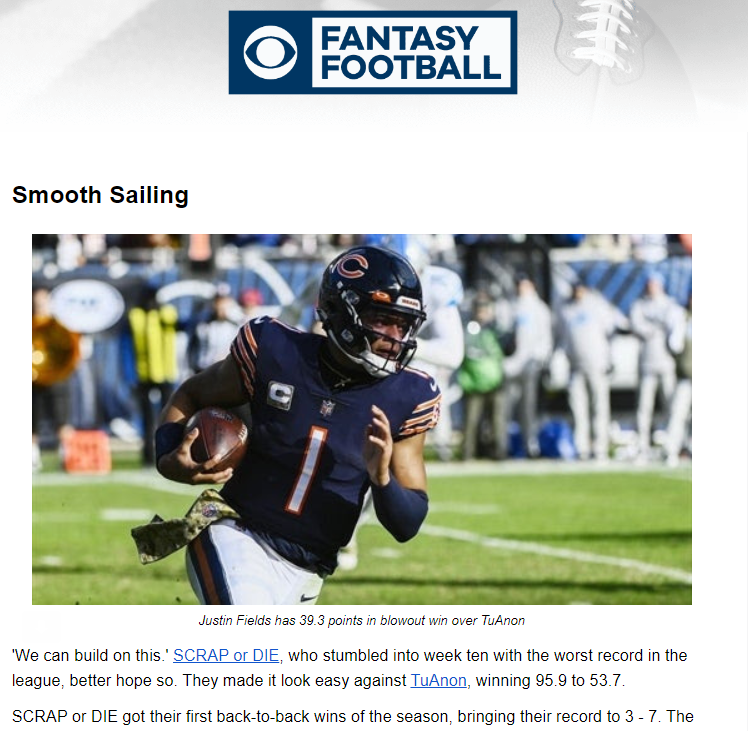
In the olden days, if you wanted to send out a report to your employees, or an update to your clients, or a letter intended for prospective customers, you only had two options:
Option #1: Mass Communication
You create one piece of content and send this off to everybody. If it was a report, then everybody got the same report. If it was a letter to your clients, then every client got the same letter. This has the benefit of being cheap and fast, allowing you to reach as many people as possible. The drawback is that everybody gets the same content regardless of their particular circumstances.
Option #2: Custom Communications
Every client, potential customer, or employee gets content that is specifically written for them. This has the advantage of making the communication maximally effective for each end user. The cost of course, being that it takes time and money to create each communication. In many cases, it’s not feasible to send out a given number of narratives even with an outsized budget.
But what if you didn’t have to choose the least bad option? That is what’s possible with Mass Custom Communication (MCC), which takes the best parts of each option, allowing you to deliver insightful, impactful reports on a near infinite scale. But before we talk more about what MCC is, let’s talk about what it isn’t. MCC is not a form letter and it is not a ‘Mad Libs’ style narrative. We’ve all been the recipient of communications like that, and they barely register as being customized at all, let alone making us feel like they have been written just for us. This goes double if the narrative or report is part of an ongoing series of communications which all use the same template.
In order to create true MCC, you need two things: (1) a rich data set, and (2) Natural Language Generation (NLG) software that can truly synthesize that data set and turn it into a high-quality narrative. Let’s take these in order. First, you need a rich data set because you must have enough unique pieces of data, or combinations within that data, to write up something different for each end user. In essence, you need ‘too much’ information to fit into a template.
Once you have ‘too much’ information, you need high-quality synthesis from an AI NLG system. This system can go through thousands of data points to find the most relevant information for each end user. It then can automatically organize this information into a narrative with clear main points and interesting context, so that the end user is able to read something that feels unique and compelling to them. For example, a salesperson can get a weekly report that not only tells them about the top-line numbers for their sales this week, but also contextualizes those numbers with trends from their sales history and larger trends within the company.

Individual Outreach
A great example of the power of MCC comes from the world of fantasy sports. For those of you unfamiliar with how fantasy sports work, you and your friends each draft players within a given sport, and then your ‘team’ competes with other teams in the league. It’s sort of like picking a portfolio of stocks and seeing who can do the best.
People love playing fantasy sports, but because each team is unique, and because there are millions of fantasy players, people were never able to get stories about their fantasy league the same way that they get stories about the professional leagues. With the advent of MCC, suddenly they could, and CBS Sports decided to take advantage of it.
For the last 10 years, we’ve written up stories about what happened for every CBS fantasy team every week, creating game recaps, game previews, draft reports, power rankings, and many other content pieces, each with headlines, pictures, and other visual elements. This was actually infoSentience’s first product, so it is near and dear to my heart. We’ve now created over 200 million unique articles which give CBS players what we call a ‘front page’ experience, which covers their league using the same types of content (narratives, headlines, pictures) as the front page of a newspaper. Previously, they could only get a ‘back page’ experience that showed them columns of stats (yes, I realize I’m dating myself with this reference).

Critically, quality is key when it comes to making these stories work. Cookie-cutter templates are going to get real stale, real fast when readers see the same things over and over again each week. Personalization involves more than just filling in names and saying who won, it’s about finding the unique combinations of data and events that speaks to what made the game interesting. It’s writing about how you made a great move coaching AND how that made the difference in your game AND how that means you are now the top-rated coach in your league.
This type of insight is what makes for compelling reading. Open rates for the CBS weekly recap emails we send out are the highest of any emails CBS sends to their users. If you are sending out weekly reports to each of your department managers, or monthly updates for each of your clients, they have to be interesting or they’re not going to be read. If each report is surfacing the most critical information in a fresh, non-repetitive manner, then end users will feel compelled to read them.

Long Tail Reporting
Reports don’t necessarily have to be targeted at individuals in order to achieve scale. You might also just need to write a lot of reports using many subsets of your data. These reports might be targeted towards groups, or just posted onto a website for anybody to read. This might be better labeled Mass ‘Niche’ Communications, but it definitely falls under the MCC umbrella.
CBS has not only taken advantage of MCC for their fantasy product, but has also applied it to live sports. They leverage our automated reporting technology to supplement their newsroom by writing stories they otherwise wouldn’t have time for. Being one of the major sports sites in the US, they obviously have plenty of quality journalists. That still doesn’t mean that they are capable of covering every single NFL, NBA, college basketball, college football, and European soccer match, let alone writing up multiple articles for each game, covering different angles such as recapping the action, previewing the game, and covering the gambling lines.
That’s where our technology comes in. We provide a near limitless amount of sports coverage for CBS Sports at high quality. That last part is once again key. CBS Sports is not some fly-by-night website looking to capitalize on SEO terms by throwing up ‘Mad-Libs’ style, cookie-cutter articles. These write-ups need to have all the variety, insight, and depth that a human-written article would have, and that’s what we’ve delivered. For example, take a look at this college football game preview. If you just stumbled across that article you would have no idea it was written by a computer, and that’s the point.
Our work for IU Health is another example of this type of reporting. We automatically write and update bios for every doctor in their network, using information such as their education history, specializations, locations, languages, and many other attributes. We even synthesize and highlight positive patient reviews. Like with CBS, these bios would be too difficult to write up manually. There are thousands of doctors within IU’s network, and dozens come and go every month. By automating the bios, IU not only saved themselves a great deal of writing, but also made sure that all their bios are up to date with the latest information, such as accurate locations and patient ratings.
Your Turn?
If you are in a situation where you are either (A) not creating all the content you need because you don’t have the workforce, or (B) using generic reports/communications when you would really benefit from having a custom message, then hopefully this article opened your eyes to a new possibility. Mass Custom Communication allows you to have your cake and eat it too. Maybe your use case can be the one I talk about in the next version of this article.